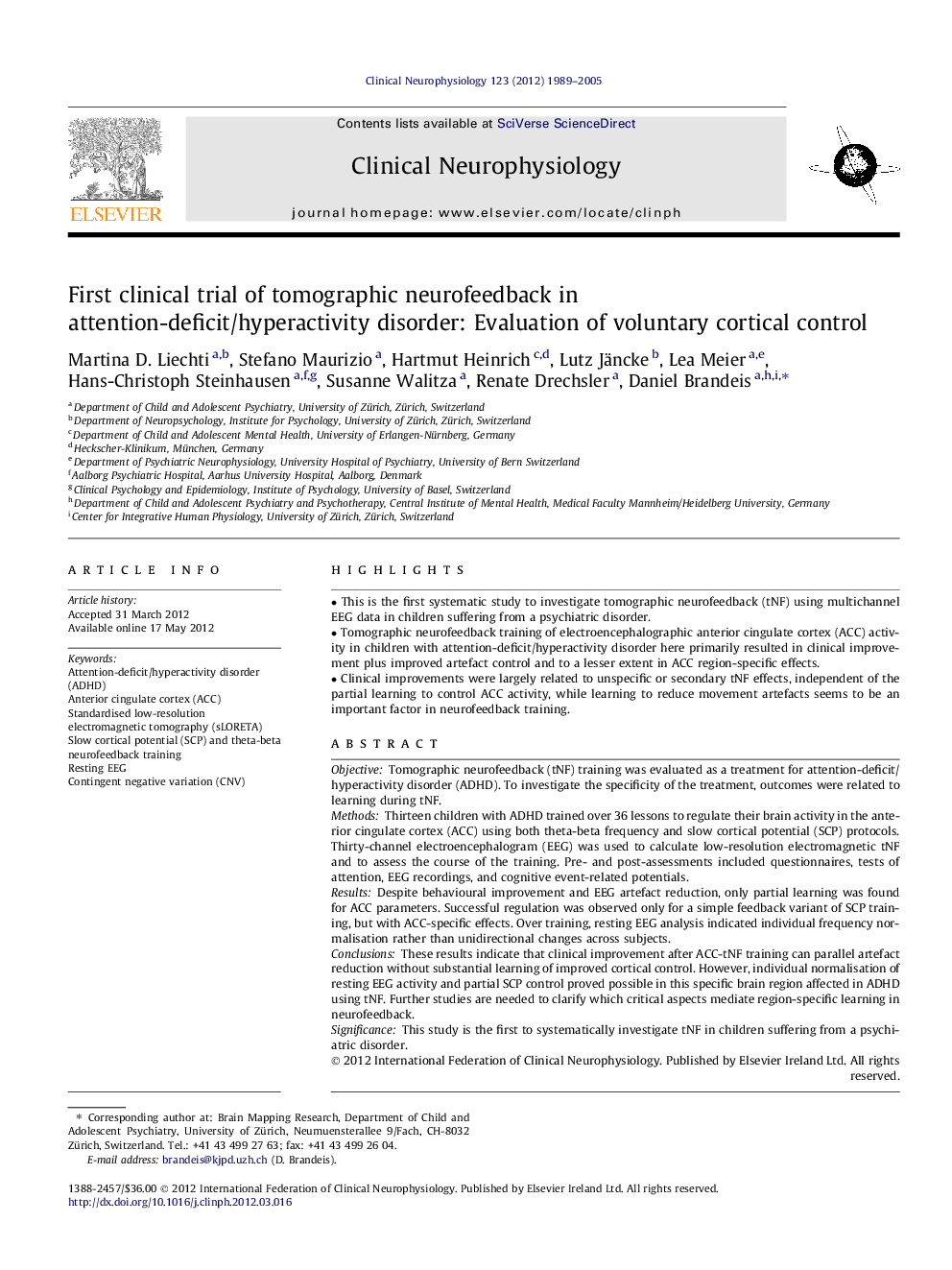| Article ID | Journal | Published Year | Pages | File Type |
|---|---|---|---|---|
| 3045382 | Clinical Neurophysiology | 2005 | 17 Pages |
ObjectiveTomographic neurofeedback (tNF) training was evaluated as a treatment for attention-deficit/hyperactivity disorder (ADHD). To investigate the specificity of the treatment, outcomes were related to learning during tNF.MethodsThirteen children with ADHD trained over 36 lessons to regulate their brain activity in the anterior cingulate cortex (ACC) using both theta-beta frequency and slow cortical potential (SCP) protocols. Thirty-channel electroencephalogram (EEG) was used to calculate low-resolution electromagnetic tNF and to assess the course of the training. Pre- and post-assessments included questionnaires, tests of attention, EEG recordings, and cognitive event-related potentials.ResultsDespite behavioural improvement and EEG artefact reduction, only partial learning was found for ACC parameters. Successful regulation was observed only for a simple feedback variant of SCP training, but with ACC-specific effects. Over training, resting EEG analysis indicated individual frequency normalisation rather than unidirectional changes across subjects.ConclusionsThese results indicate that clinical improvement after ACC-tNF training can parallel artefact reduction without substantial learning of improved cortical control. However, individual normalisation of resting EEG activity and partial SCP control proved possible in this specific brain region affected in ADHD using tNF. Further studies are needed to clarify which critical aspects mediate region-specific learning in neurofeedback.SignificanceThis study is the first to systematically investigate tNF in children suffering from a psychiatric disorder.
► This is the first systematic study to investigate tomographic neurofeedback (tNF) using multichannel EEG data in children suffering from a psychiatric disorder. ► Tomographic neurofeedback training of electroencephalographic anterior cingulate cortex (ACC) activity in children with attention-deficit/hyperactivity disorder here primarily resulted in clinical improvement plus improved artefact control and to a lesser extent in ACC region-specific effects. ► Clinical improvements were largely related to unspecific or secondary tNF effects, independent of the partial learning to control ACC activity, while learning to reduce movement artefacts seems to be an important factor in neurofeedback training.
